Determination of the Self-Ignition Behavior of the Accumulation of Sludge Dust and Sludge Pellets from the Sewage Sludge Thermal Drying Station
Abstract
1. Introduction
2. Materials and Methods
2.1. Materials
2.2. Methods
2.2.1. Moisture Content Analysis
2.2.2. Bulk Density Analysis
2.2.3. Elemental Analysis
2.2.4. Particle Size Distribution
2.2.5. Spontaneous Ignition Behavior
3. Results and Discussion
3.1. Moisture Content Analysis
3.2. Bulk Density Analysis
3.3. Elemental Analysis
3.4. Particle Size Distribution Analysis
3.5. The Spontaneous Ignition Behavior Analysis
4. Conclusions
Author Contributions
Funding
Data Availability Statement
Conflicts of Interest
References
- Dowbysz, A.; Samsonowicz, M.; Kukfisz, B. Recent Advances in Bio-Based Additive Flame Retardants for Thermosetting Resins. Int. J. Environ. Res. Public Health 2022, 19, 4828. [Google Scholar] [CrossRef] [PubMed]
- Serrano-Ruiz, J.C. Biomass: A Renewable Source of Fuels, Chemicals and Carbon Materials. Molecules 2020, 25, 5217. [Google Scholar] [CrossRef] [PubMed]
- Hu, M.; Ye, Z.; Zhang, H.; Chen, B.; Pan, Z.; Wang, J. Thermochemical conversion of sewage sludge for energy and resource recovery: Technical challenges and prospects. Environ. Pollut. Bioavailab. 2021, 33, 145–163. [Google Scholar] [CrossRef]
- Rorat, A.; Courtois, P.; Vandenbulcke, F.; Lemiere, S. Sanitary and environmental aspects of sewage sludge management. In Industrial and Municipal Sludge; Elsevier: Amsterdam, The Netherlands, 2019; pp. 155–180. [Google Scholar]
- Di Giacomo, G.; Romano, P. Evolution and Prospects in Managing Sewage Sludge Resulting from Municipal Wastewater Purification. Energies 2022, 15, 5633. [Google Scholar] [CrossRef]
- Medic Pejic, L.; Fernandez Anez, N.; García Torrent, J.; Ramírez-Gómez, Á. Determination of spontaneous combustion of thermally dried sewage sludge. J. Loss Prev. Process Ind. 2015, 36, 352–357. [Google Scholar] [CrossRef]
- Đurđević, D.; Žiković, S.; Blecich, P. Sustainable Sewage Sludge Management Technologies Selection Based on Techno-Economic-Environmental Criteria: Case Study of Croatia. Energies 2022, 15, 3941. [Google Scholar] [CrossRef]
- Jiang, L. Co-pelletization of sewage sludge and biomass: The density and hardness of pellet. Bioresour. Technol. 2014, 166, 435–443. [Google Scholar] [CrossRef]
- Agoro, M.A.; Adeniji, A.O.; Adefisoye, M.A.; Okoh, O.O. Heavy Metals in Wastewater and Sewage Sludge from Selected Municipal Treatment Plants in Eastern Cape Province, South Africa. Water 2020, 12, 2746. [Google Scholar] [CrossRef]
- Geng, H.; Ying, X.; Zheng, L.; Gong, H.; Dai, L.; Dai, X. An overview of removing heavy metals from sewage sludge: Achievements and perspectives. Environ. Pollut. 2020, 266, 115375. [Google Scholar] [CrossRef]
- Jia, L. Study on the Hg(0) removal characteristics and synergistic mechanism of iron-based modified biochar doped with multiple metals. Bioresour. Technol. 2021, 332, 125086. [Google Scholar] [CrossRef]
- Houillon, G.; Jolliet, O. Life cycle assessment of processes for the treatment of wastewater urban sludge: Energy and global warming analysis. J. Clean. Prod. 2005, 13, 287–299. [Google Scholar] [CrossRef]
- Häggström, G.; Hannl, T.K.; Hedayati, A.; Kuba, M.; Skoglund, N.; Öhman, M. Single Pellet Combustion of Sewage Sludge and Agricultural Residues with a Focus on Phosphorus. Energy Fuels 2021, 35, 10009–10022. [Google Scholar] [CrossRef]
- Kylili, A.; Christoforou, E.; Fokaides, P.A. Environmental evaluation of biomass pelleting using life cycle assessment. Biomass Bioenergy 2016, 84, 107–117. [Google Scholar] [CrossRef]
- Sheng, C.; Yao, C. Review on Self-Heating of Biomass Materials: Understanding and Description. Energy Fuels 2022, 36, 731–761. [Google Scholar] [CrossRef]
- Díaz, E.; Pintado, L.; Faba, L.; Ordóńez, S.; González-LaFuente, J.M. Effect of sewage sludge composition on the susceptibility to spontaneous combustion. J. Hazard. Mater. 2019, 361, 267–272. [Google Scholar] [CrossRef]
- Kukfisz, B. Analysis of minimum ignition temperature of pellet dust layer and cloud due to adding BC and ABC fire extinguishing powders. MATEC Web Conf. 2018, 247, 00003. [Google Scholar] [CrossRef][Green Version]
- EN 14034-1; Determination of Explosion Characteristics of Dust Clouds. Part 1: Determination of the Maximum Explosion Pressure pmax of Dust Clouds. CEN: Brussels, Belgium, 2004.
- EN 14034-2; Determination of Explosion Characteristics of Dust Clouds. Part 2: Determination of the Maximum Rate of Explosion Pressure Rise (dp/dt)Max of Dust Clouds. CEN: Brussels, Belgium, 2006.
- ISO/IEC 80079-20-2; Explosive Atmospheres. Part 20-2: Material Characteristics—Combustible Dusts Test Methods. ISO: Geneva, Switzerland, 2016.
- EN 14034-3; Determination of Explosion Characteristics of Dust Clouds. Determination of the Lower Explosion Limit LEL of Dust Clouds. CEN: Brussels, Belgium, 2006.
- EN 14034-4; Determination of Explosion Characteristics of Dust Clouds. Part 4: Determination of the Limiting Oxygen Concentration LOC of Dust Clouds. CEN: Brussels, Belgium, 2004.
- Kukfisz, B.; Półka, M.; Woliński, M. Experimental Investigations of Nitrogen Content Influence on Spontaneous Ignition Behaviour of Dust Accumulations. Adv. Mater. Res. 2013, 718, 74–79. [Google Scholar] [CrossRef]
- Kukfisz, B.; Półka, M.; Salamonowicz, Z.; Woliński, T. Study on inertization of dust-air mixtures. Chem. Ind. 2014, 93, 103–106. [Google Scholar]
- Cloney, C. Combustible Dust Incident Report; Dust Safety Science: Bristol, UK, 2021; pp. 1–47. [Google Scholar]
- Cloney, C. Combustible Dust Incident Report; Dust Safety Science: Bristol, UK, 2022; pp. 1–52. [Google Scholar]
- Hrušovský, I.; Martinka, J.; Rantuch, P.; Balog, K. Investigation of spontaneous combustion tendency of vegetable oils by the means of differential thermal analysis. Trans. VSB-TUP. Saf. Eng. Ser. 2015, 10, 8–12. [Google Scholar] [CrossRef][Green Version]
- Bertani, R.; Biasin, A.; Canu, P.; Della Zassa, M.; Refosco, D.; Simionato, F.; Zerlottin, M. Self-heating of dried industrial tannery wastewater sludge induced by pyrophoric iron sulfides formation. J. Hazard. Mater. 2016, 305, 105–114. [Google Scholar] [CrossRef]
- Mannan, S. Fire. In Lees’ Process Safety Essentials; Mannan, S., Ed.; Butterworth-Heinemann: Oxford, UK, 2014; pp. 201–256. [Google Scholar]
- Siuta, D.; Kukfisz, B.; Kuczyńska, A.; Mitkowski, P.T. Methodology for the Determination of a Process Safety Culture Index and Safety Culture Maturity Level in Industries. Int. J. Environ. Res. Public Health 2022, 19, 2668. [Google Scholar] [CrossRef] [PubMed]
- Skrizovska, M.; Veznikova, H.; Roupcova, P. Inclination to self-ignition and analysis of gaseous products of wood chips heating. Acta Chim. Slov. 2020, 13, 88–97. [Google Scholar] [CrossRef]
- Hughes, I.; Hase, T. Measurements and Their Uncertainties; Oxford University Press: Oxford, UK, 2010. [Google Scholar]
- Wu, D.; Schmidt, M.; Berghmans, J. Spontaneous ignition behaviour of coal dust accumulations: A comparison of extrapolation methods from lab-scale to industrial-scale. Proc. Combust. Inst. 2018, 37, 4181–4191. [Google Scholar] [CrossRef]
- Lohrer, C.; Schmidt, M.; Krause, U. A study on the influence of liquid water and water vapour on the self-ignition of lignite coal-experiments and numerical simulations. J. Loss Prev. Proc. Ind. 2005, 18, 167–177. [Google Scholar] [CrossRef]
- García-Torrent, J.; Ramírez-Gómez, Á.; Querol-Aragón, E.; Grima-Olmedo, C.; Medic-Pejic, L. Determination of the risk of self-ignition of coals and biomass materials. J. Hazard Mater. 2012, 213, 230–235. [Google Scholar] [CrossRef] [PubMed]
- Frost, K.; Lüth, P.; Schmidt, M.; Simon, K.; Uhlig, S. Evaluation of the Interlaboratory Test 2015–2016 on the Method DIN EN 15188:2007 Determination of the Spontaneous Ignition Behaviour of Dust Accumulations; Bundesanstalt für Materialforschung und-prüfung (BAM): Berlin, Germany, 2016; p. 107. [Google Scholar]
- Van Rossum, G.; Drake, F.L. Python 3 Reference Manual; CreateSpace: Scotts Valley, CA, USA, 2009. [Google Scholar]
- Harris, C.R.; Millman, K.J.; van der Walt, S.J.; Gommers, R.; Virtanen, P.; Cournapeau, D.; Wieser, E.; Taylor, J.; Berg, S.; Smith, N.J. Array programming with NumPy. Nature 2020, 585, 357–362. [Google Scholar] [CrossRef]
- EN 15188; Determination of the Spontaneous Ignition Behaviour of Dust Accumulations. CEN: Brussels, Belgium, 2020.
- Ronda, A.; Della Zassa, M.; Gianfelice, G.; Iáñez-Rodríguez, I.; Canu, P. Smouldering of different dry sewage sludges and residual reactivity of their intermediates. Fuel 2019, 247, 148–159. [Google Scholar] [CrossRef]
- Krause, U.; Schmidt, M. The influence of initial conditions on the propagation of smouldering fires in dust accumulations. J. Loss Prev. Process Ind. 2001, 14, 527–532. [Google Scholar] [CrossRef]
- Tumuluru, J.S. Effect of pellet die diameter on density and durability of pellets made from high moisture woody and herbaceous biomass. Carbon Resour. Convers. 2018, 1, 44–54. [Google Scholar] [CrossRef]
- Schwarzer, L.; Jensen, P.A.; Wedel, S.; Glarborg, P.; Karlström, O.; Holm, J.K.; Dam-Johansen, K. Self-heating and thermal runaway of biomass—Lab-scale experiments and modeling for conditions resembling power plant mills. Fuel 2021, 294, 120281. [Google Scholar] [CrossRef]
- Report on the Elemental Analyses of Samples from the Targeted National Sewage Sludge Survey; U.S. Environmental Protection Agency: Washington, DC, USA, 2021; pp. 1–21.
- Fernandez-Anez, N.; Garcia-Torrent, J.; Medic-Pejic, L. Flammability properties of thermally dried sewage sludge. Fuel 2014, 134, 636–643. [Google Scholar] [CrossRef]
- Restuccia, F.; Fernandez-Anez, N.; Rein, G. Experimental measurement of particle size effects on the self-heating ignition of biomass piles: Homogeneous samples of dust and pellets. Fuel 2019, 256, 115838. [Google Scholar] [CrossRef]
- Della Zassa, M.; Ronda, A.; Gianfelice, G.; Zerlottin, M.; Canu, P. Scale effects and mechanisms ruling the onset of wastewater sludges self-heating. Fuel 2019, 256, 115876. [Google Scholar] [CrossRef]
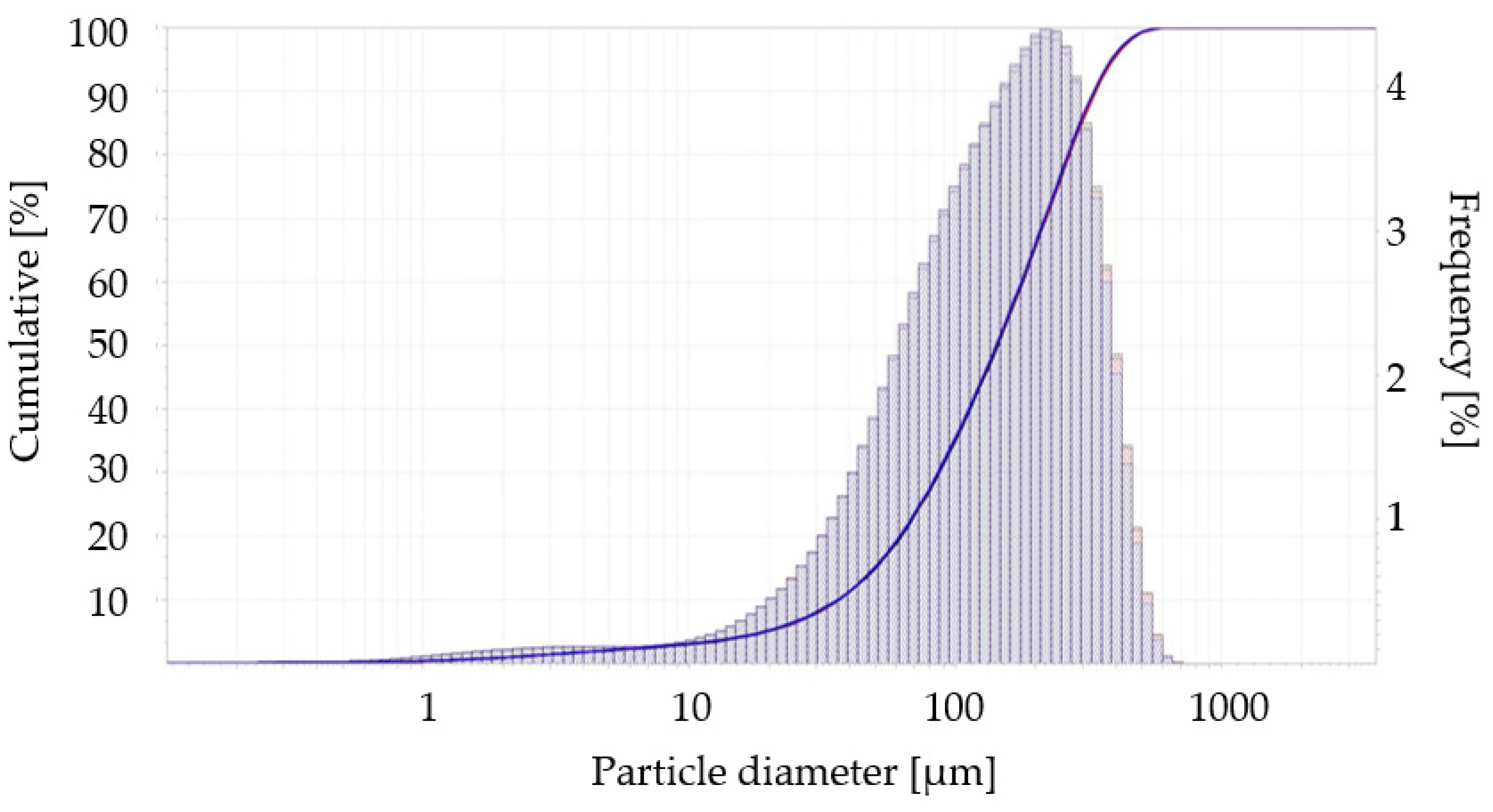
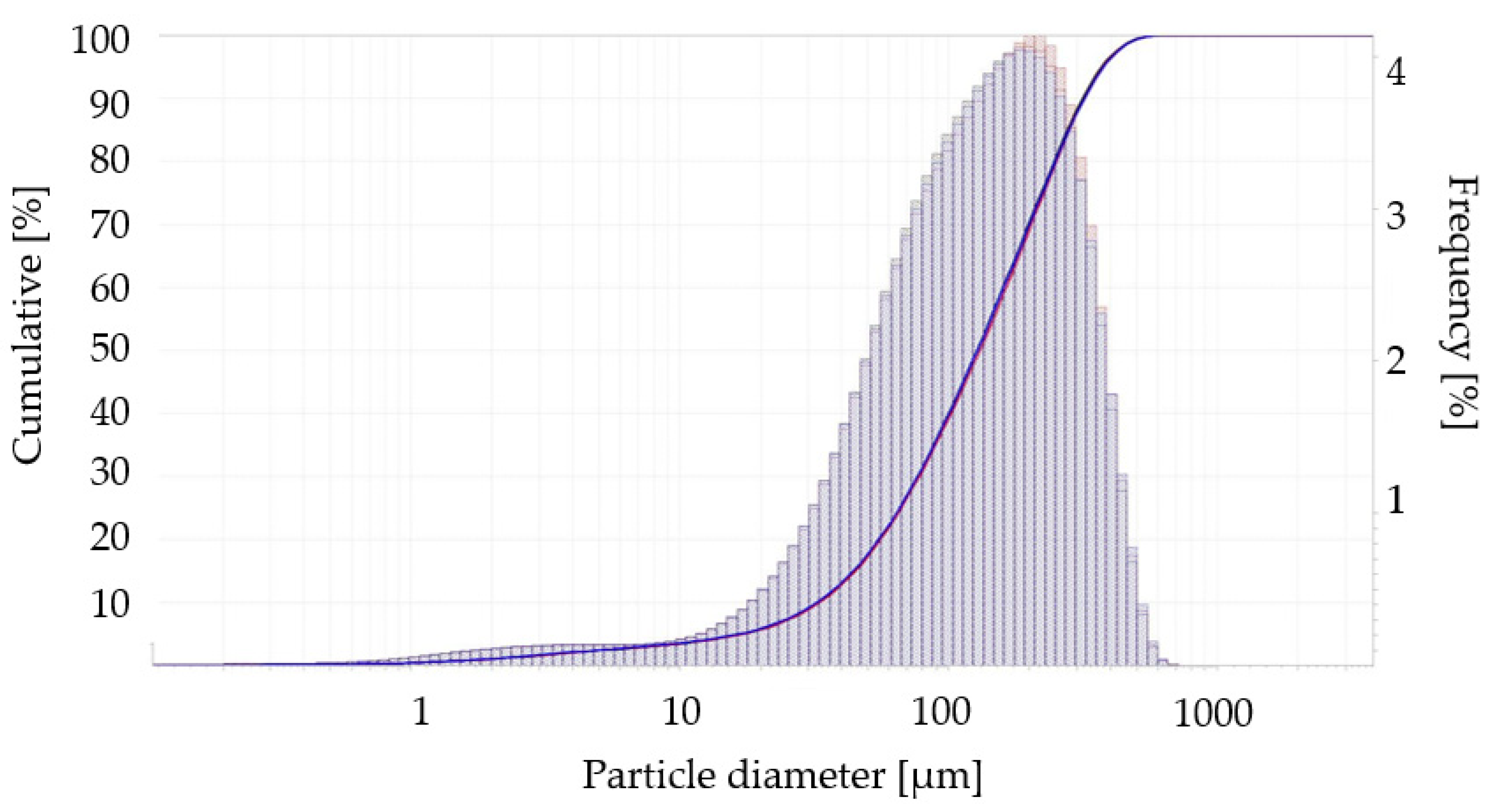

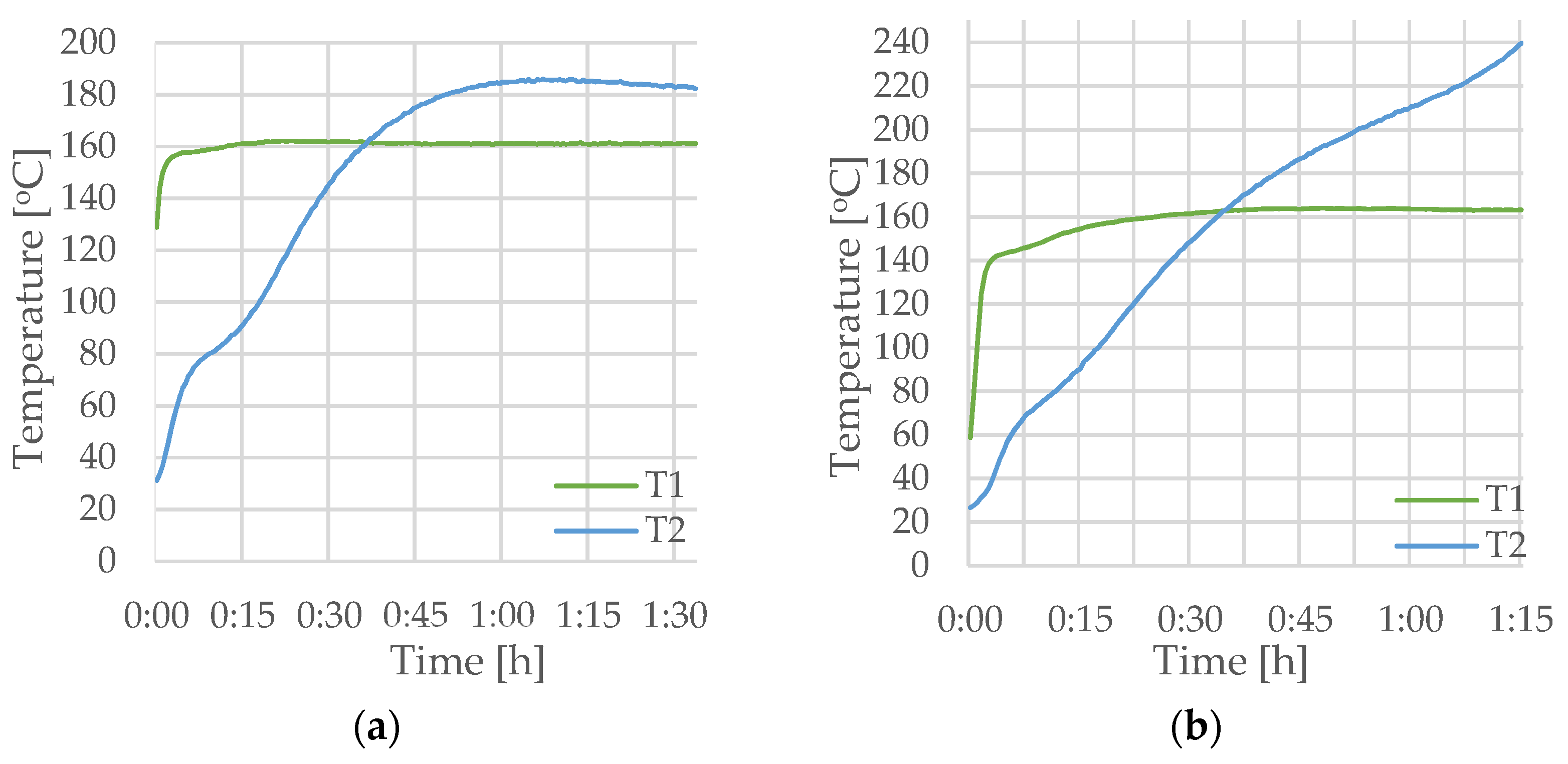
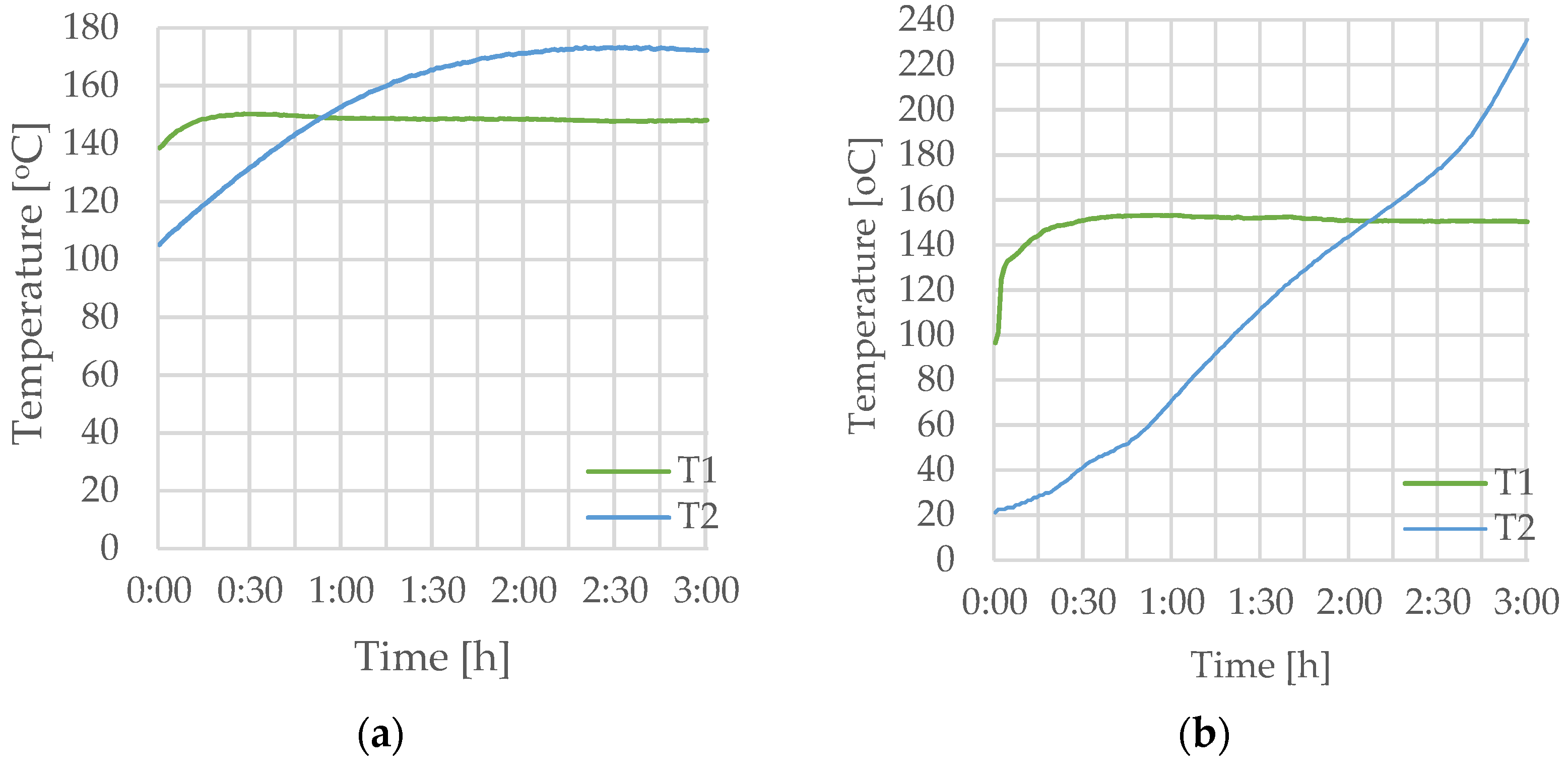
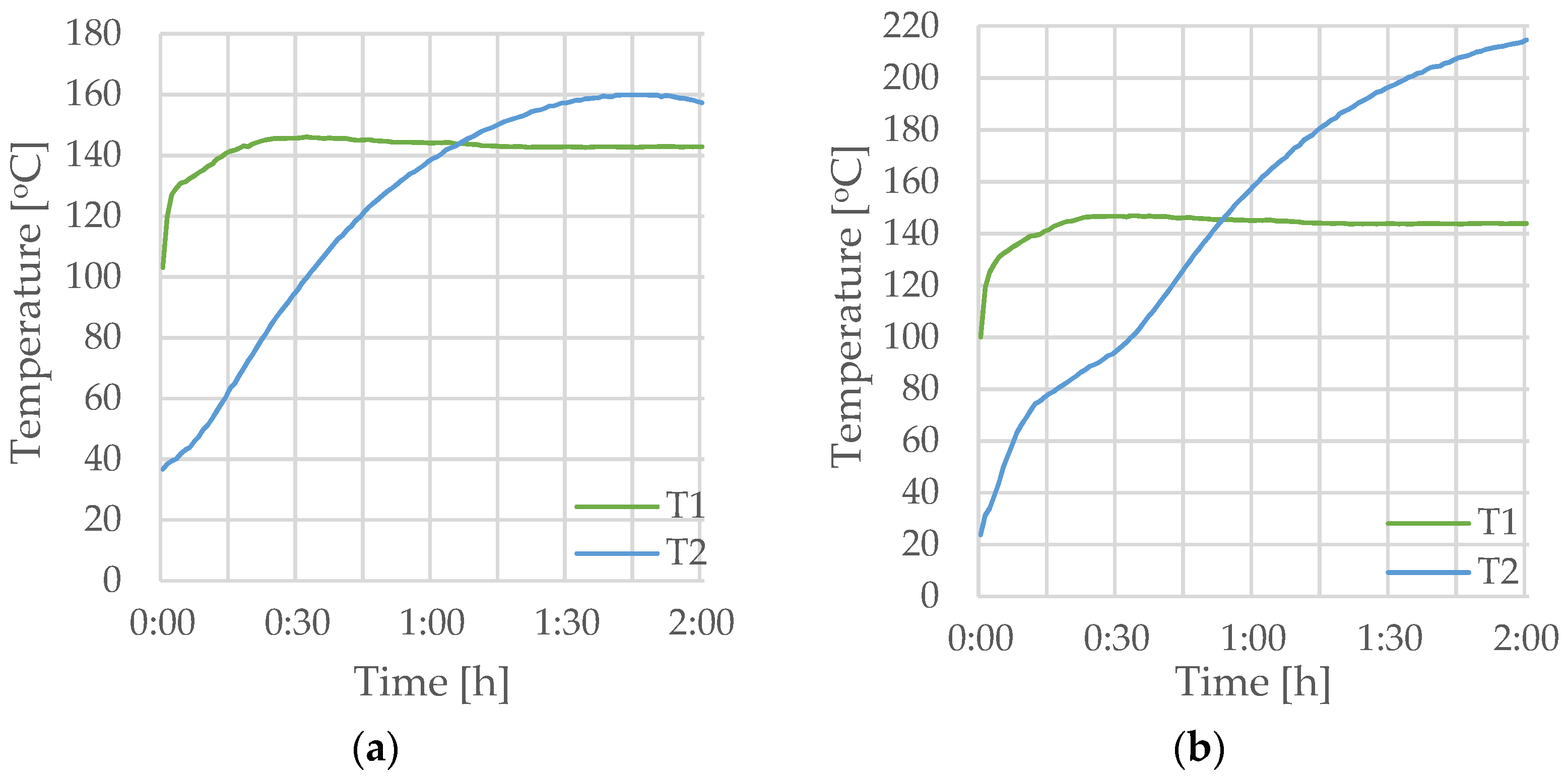

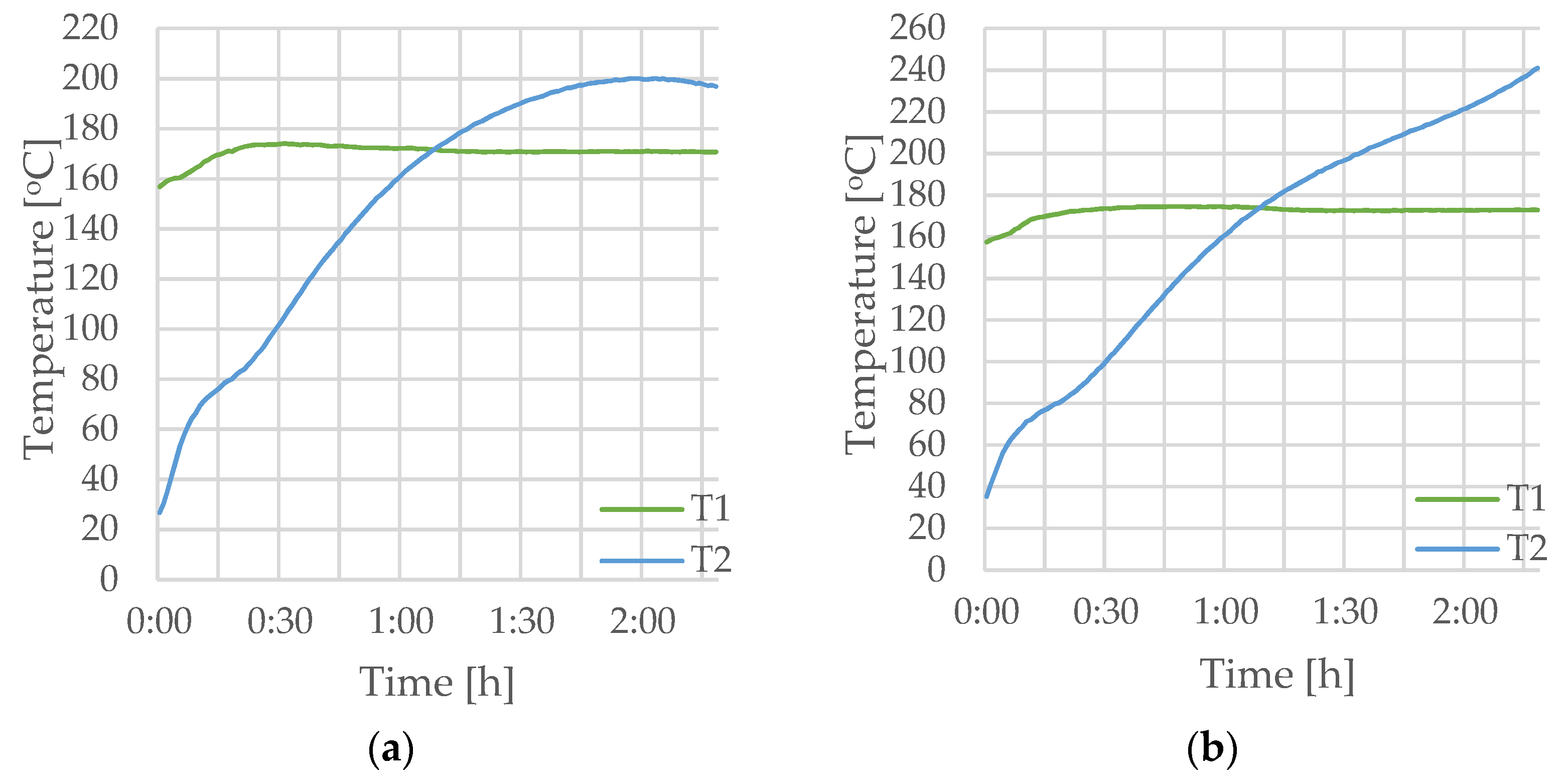

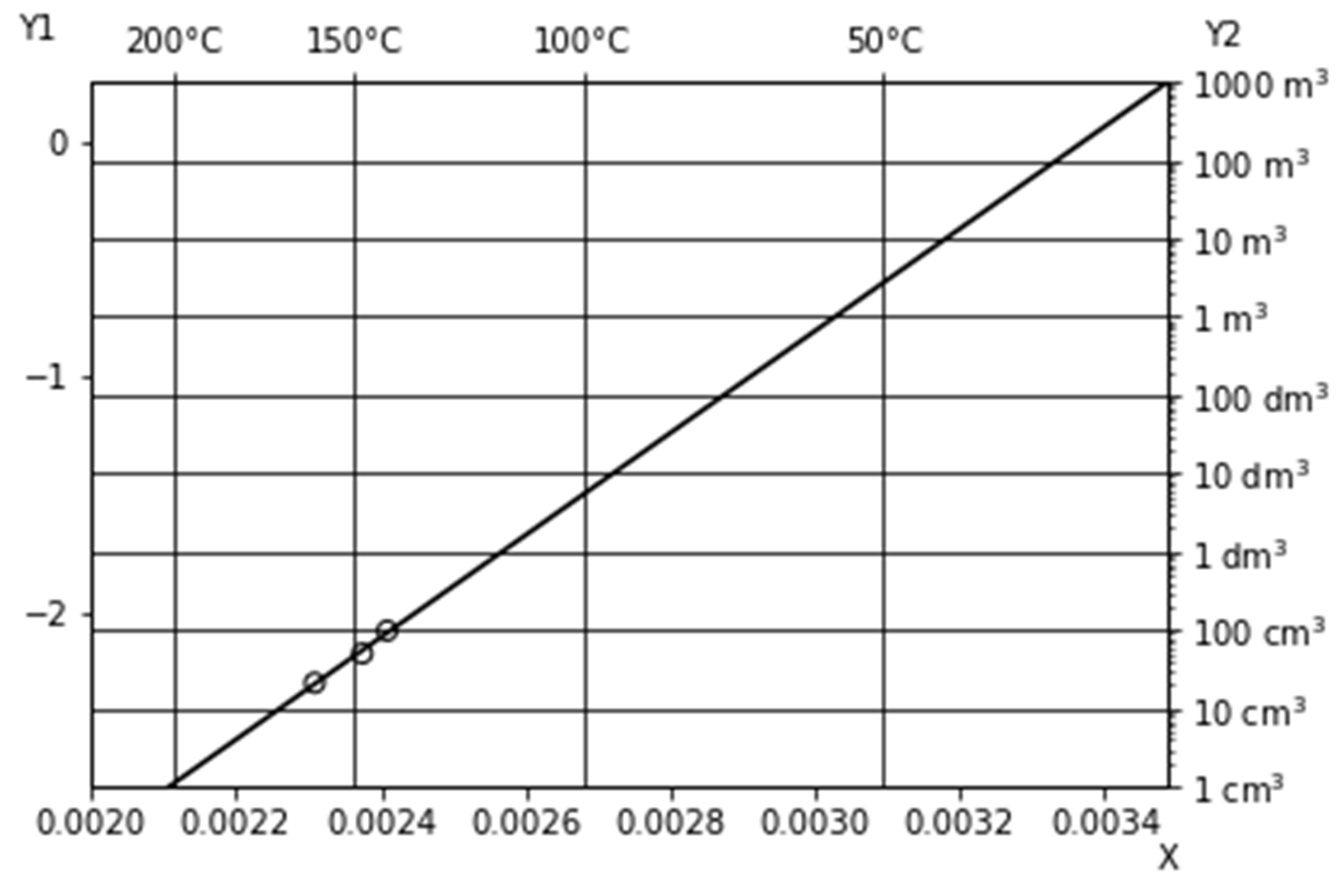
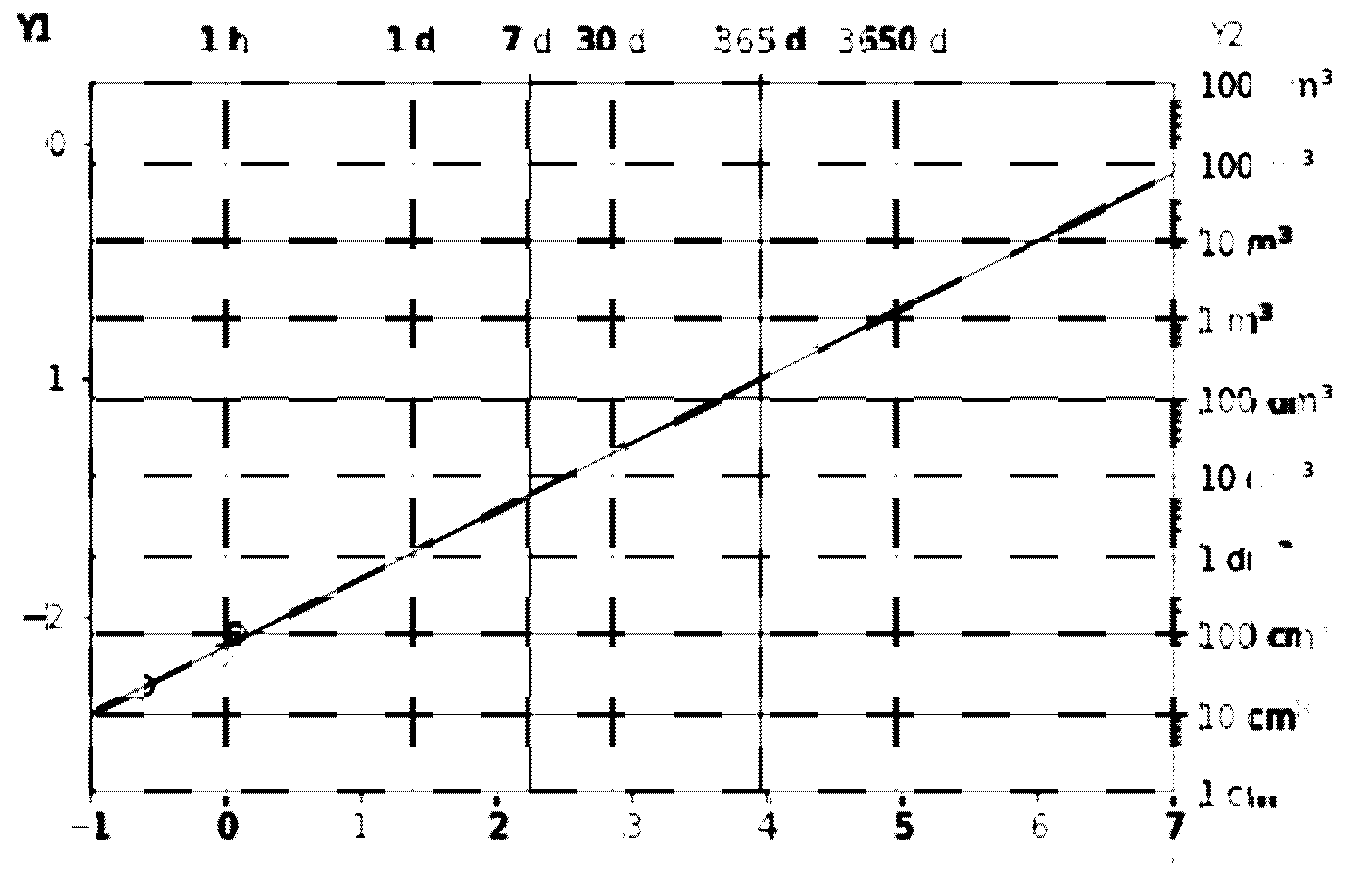
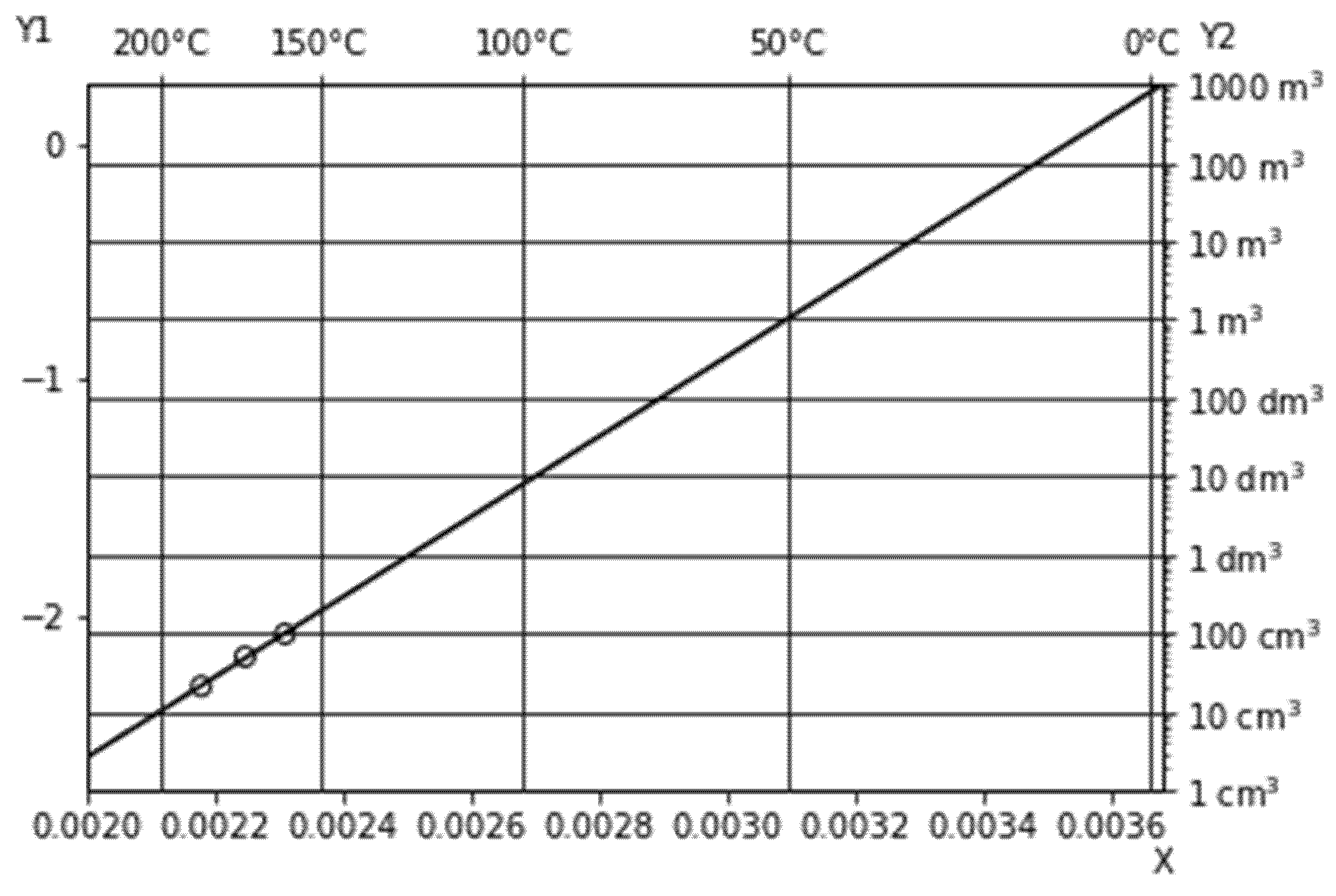
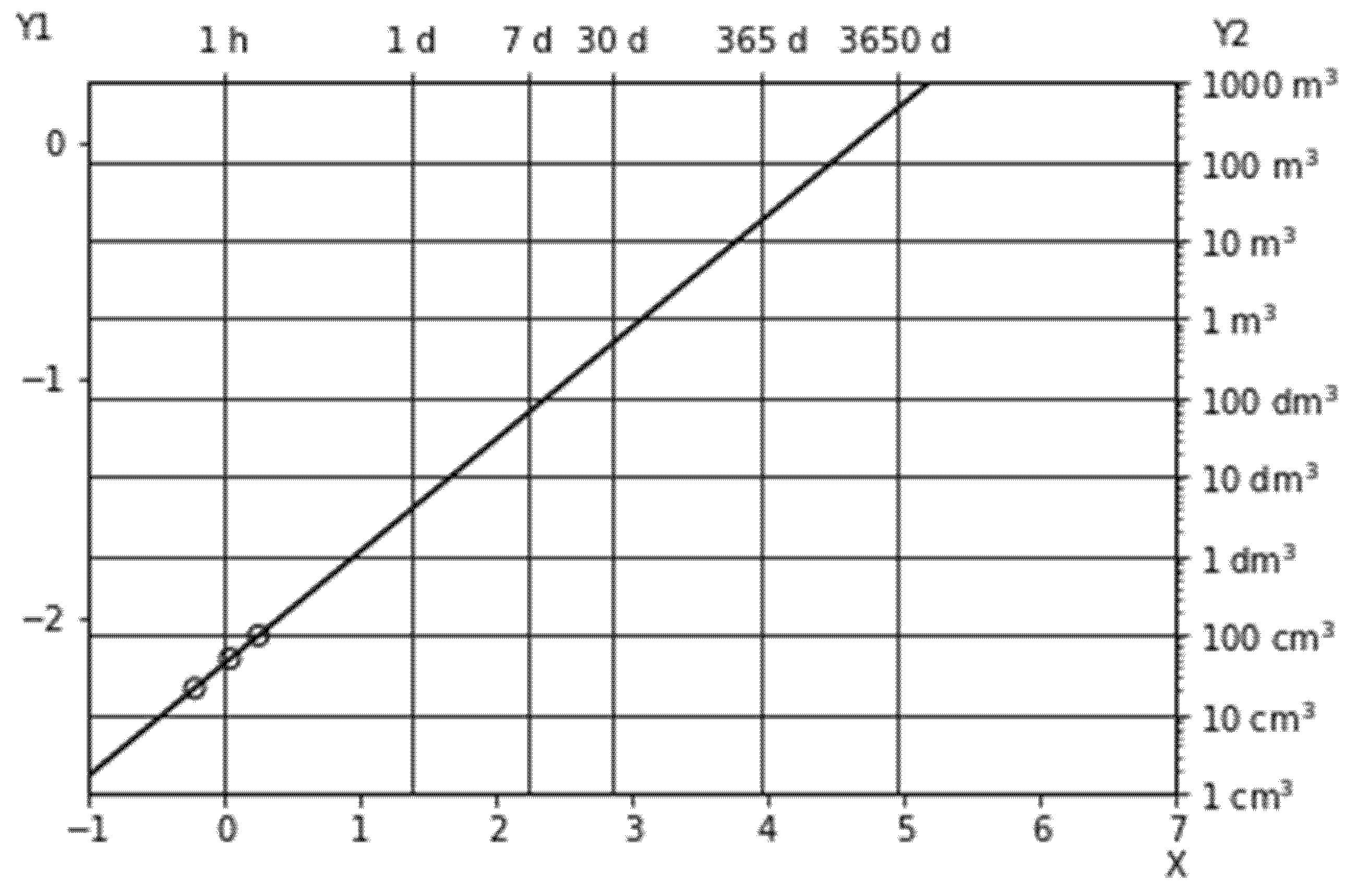
| Material | Drying Time [s] | Sample Mass | Moisture Content [%] | Average Moisture Content [%] | |
|---|---|---|---|---|---|
| Before Drying [g] | After Drying [g] | ||||
| Sludge dust | 520 | 2.003 | 1.878 | 6.241 | 6.067 ± 0.193 |
| 405 | 2.000 | 1.878 | 6.100 | ||
| 455 | 1.997 | 1.880 | 5.859 | ||
| Sludge pellets | 960 | 2.001 | 1.801 | 9.995 | 9.974 ± 0.414 |
| 1116 | 2.000 | 1.809 | 9.550 | ||
| 1266 | 2.004 | 1.796 | 10.378 | ||
| Material | Volume [cm3] | Sample Mass [g] | Bulk Density [g/cm3] | Average Bulk Density [g/cm3] |
|---|---|---|---|---|
| Sludge dust | 46 | 19.88 | 0.432 | 0.427 ± 0.008 |
| 46 | 19.36 | 0.421 | ||
| Sludge pellets | 50 | 30.91 | 0.618 | 0.621 ± 0.005 |
| 50 | 31.18 | 0.623 | ||
| 50 | 31.32 | 0.626 | ||
| 50 | 30.81 | 0.616 |
| Material | C [%] | H [%] | N [%] | S [%] |
|---|---|---|---|---|
| Sludge dust | 26.84 | 4.581 | 5.20 | 1.581 |
| 26.69 | 4.569 | 5.14 | 1.576 | |
| Average | 26.77 ± 0.11 | 4.575 ± 0.008 | 5.17 ± 0.04 | 1.579 ± 0.004 |
| Sludge pellets | 30.66 | 5.272 | 4.79 | 1.580 |
| 30.97 | 5.197 | 4.85 | 1.559 | |
| Average | 30.82 ± 0.22 | 5.235 ± 0.053 | 4.82 ± 0.042 | 1.570 ± 0.015 |
| Particle Size [µm] | Sample 1 [%] | Sample 2 [%] | Sample 3 [%] | Average [%] | CV * [%] |
|---|---|---|---|---|---|
| <50 | 14.936 | 15.232 | 15.235 | 15.134 | 0.926 |
| <70 | 23.109 | 23.503 | 23.516 | 23.376 | 0.807 |
| <100 | 35.010 | 35.528 | 35.577 | 35.372 | 0.725 |
| <150 | 51.791 | 52.348 | 52.488 | 52.209 | 0.577 |
| <200 | 65.443 | 65.887 | 66.202 | 65.844 | 0.473 |
| <275 | 81.204 | 81.457 | 81.990 | 81.550 | 0.401 |
| <370 | 93.217 | 93.328 | 93.782 | 93.442 | 0.262 |
| <520 | 99.421 | 99.439 | 99.526 | 99.462 | 0.046 |
| <710 | 99.998 | 99.999 | 99.999 | 99.999 | 0 |
| <1000 | 100 | 100 | 100 | 100 | 0 |
| <1500 | 100 | 100 | 100 | 100 | 0 |
| <2000 | 100 | 100 | 100 | 100 | 0 |
| Particle Size [µm] | Sample 1 [%] | Sample 2 [%] | Sample 3 [%] | Average [%] | CV * [%] |
|---|---|---|---|---|---|
| <50 | 17.511 | 17.291 | 17.686 | 17.496 | 0.924 |
| <70 | 26.993 | 26.571 | 27.043 | 26.869 | 0.788 |
| <100 | 40.031 | 39.226 | 39.855 | 39.704 | 0.870 |
| <150 | 57.289 | 56.034 | 56.956 | 56.760 | 0.935 |
| <200 | 70.461 | 69.225 | 70.057 | 69.914 | 0.736 |
| <275 | 84.712 | 83.920 | 84.167 | 84.267 | 0.393 |
| <370 | 94.852 | 94.547 | 94.379 | 94.593 | 0.207 |
| <520 | 99.628 | 99.596 | 99.531 | 99.585 | 0.040 |
| <710 | 99.999 | 99.999 | 99.999 | 99.999 | 0.000 |
| <1000 | 100 | 100 | 100 | 100 | 0 |
| <1500 | 100 | 100 | 100 | 100 | 0 |
| <2000 | 100 | 100 | 100 | 100 | 0 |
| Particle Size [µm] | Sample 1 [%] | Sample 2 [%] | Sample 3 [%] | Average [%] | CV * [%] |
|---|---|---|---|---|---|
| <50 | 13.294 | 13.410 | 13.637 | 13.447 | 1.060 |
| <70 | 19.920 | 19.980 | 20.348 | 20.083 | 0.943 |
| <100 | 29.883 | 29.856 | 30.389 | 30.043 | 0.817 |
| <150 | 44.740 | 44.730 | 45.409 | 44.959 | 0.707 |
| <200 | 57.548 | 57.562 | 58.421 | 57.844 | 0.706 |
| <275 | 73.579 | 73.462 | 74.585 | 73.875 | 0.682 |
| <370 | 87.918 | 87.646 | 88.721 | 88.095 | 0.518 |
| <520 | 98.016 | 97.851 | 98.297 | 98.055 | 0.188 |
| <710 | 99.961 | 99.951 | 99.976 | 99.963 | 0.010 |
| <1000 | 100 | 100 | 100 | 100 | 0 |
| <1500 | 100 | 100 | 100 | 100 | 0 |
| <2000 | 100 | 100 | 100 | 100 | 0 |
| Particle Size [µm] | Analysis 1 [%] | Analysis 2 [%] | Analysis 3 [%] | Average [%] | CV * [%] |
|---|---|---|---|---|---|
| <50 | 15.134 | 17.496 | 13.447 | 15.359 | 0.132 |
| <70 | 23.376 | 26.869 | 20.083 | 23.443 | 0.145 |
| <100 | 35.372 | 39.704 | 30.043 | 35.039 | 0.138 |
| <150 | 52.209 | 56.760 | 44.959 | 51.309 | 0.116 |
| <200 | 65.844 | 69.914 | 57.844 | 64.534 | 0.095 |
| <275 | 81.550 | 84.267 | 73.875 | 79.897 | 0.067 |
| <370 | 93.442 | 94.593 | 88.095 | 92.043 | 0.038 |
| <520 | 99.462 | 99.585 | 98.055 | 99.034 | 0.009 |
| <710 | 99.999 | 99.999 | 99.963 | 99.987 | 0 |
| <1000 | 100 | 100 | 100 | 100 | 0 |
| <1500 | 100 | 100 | 100 | 100 | 0 |
| <2000 | 100 | 100 | 100 | 100 | 0 |
| Material | Sample Basket | Corresponding Silos | Induction Time ti [h:min:s] | Self-Ignition Temperature TSI [°C] | |
|---|---|---|---|---|---|
| Volume [cm3] | Diameter [cm] | Height [cm] | |||
| Sludge dust | 21.21 | 3 | 3 | 00:15:00 | 160 |
| 50.27 | 4 | 4 | 00:57:51 | 148 | |
| 98.17 | 5 | 5 | 01:12:04 | 142 | |
| Sludge pellets | 21.21 | 3 | 3 | 00:36:21 | 186 |
| 50.27 | 4 | 4 | 01:06:00 | 172 | |
| 98.17 | 5 | 5 | 01:47:12 | 160 | |
| Material | Volume [m3] | Temperature [°C] | Time [days] |
|---|---|---|---|
| Big-bag | 1 | 88.3 | 63.6 |
| Tank chamber | 10 | 75.7 | 346 |
| Container | 45 | 68.9 | 1043 |
| Silo vehicle | 60 | 66.5 | 1289 |
Disclaimer/Publisher’s Note: The statements, opinions and data contained in all publications are solely those of the individual author(s) and contributor(s) and not of MDPI and/or the editor(s). MDPI and/or the editor(s) disclaim responsibility for any injury to people or property resulting from any ideas, methods, instructions or products referred to in the content. |
© 2022 by the authors. Licensee MDPI, Basel, Switzerland. This article is an open access article distributed under the terms and conditions of the Creative Commons Attribution (CC BY) license (https://creativecommons.org/licenses/by/4.0/).
Share and Cite
Dowbysz, A.; Kukfisz, B.; Samsonowicz, M.; Bihałowicz, J.S. Determination of the Self-Ignition Behavior of the Accumulation of Sludge Dust and Sludge Pellets from the Sewage Sludge Thermal Drying Station. Energies 2023, 16, 46. https://doi.org/10.3390/en16010046
Dowbysz A, Kukfisz B, Samsonowicz M, Bihałowicz JS. Determination of the Self-Ignition Behavior of the Accumulation of Sludge Dust and Sludge Pellets from the Sewage Sludge Thermal Drying Station. Energies. 2023; 16(1):46. https://doi.org/10.3390/en16010046
Chicago/Turabian StyleDowbysz, Adriana, Bożena Kukfisz, Mariola Samsonowicz, and Jan Stefan Bihałowicz. 2023. "Determination of the Self-Ignition Behavior of the Accumulation of Sludge Dust and Sludge Pellets from the Sewage Sludge Thermal Drying Station" Energies 16, no. 1: 46. https://doi.org/10.3390/en16010046
APA StyleDowbysz, A., Kukfisz, B., Samsonowicz, M., & Bihałowicz, J. S. (2023). Determination of the Self-Ignition Behavior of the Accumulation of Sludge Dust and Sludge Pellets from the Sewage Sludge Thermal Drying Station. Energies, 16(1), 46. https://doi.org/10.3390/en16010046







